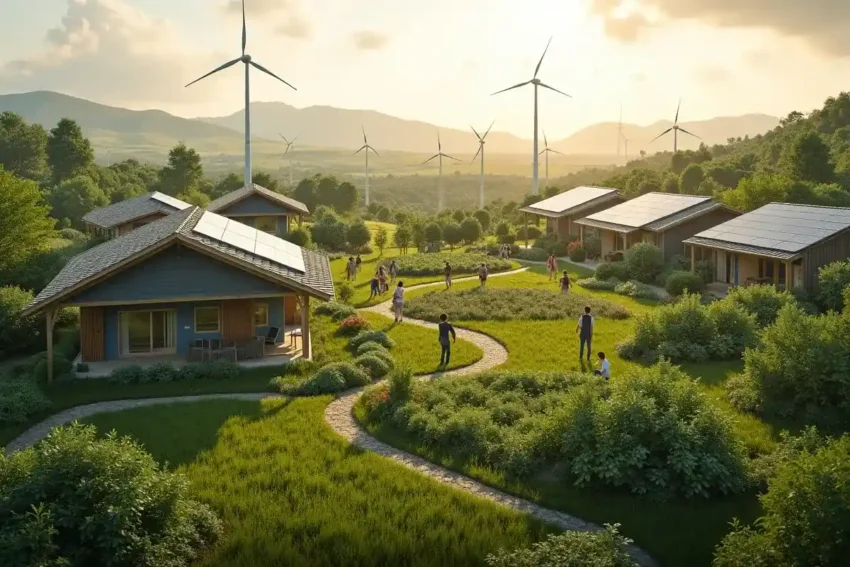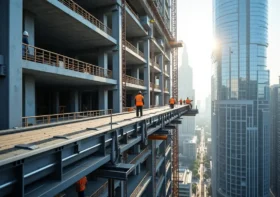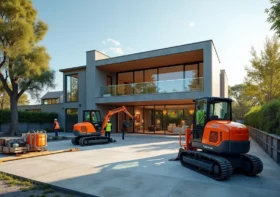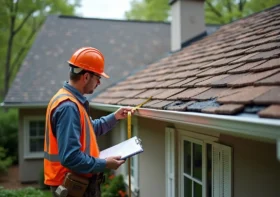What Is a Sustainable Land Use? Benefits for People and the Planet

Balancing human needs with environmental protection is no longer optional; it’s essential. Communities that adopt sustainable land use strategies not only safeguard ecosystems but also create healthier, more resilient places to live and work.
In cities like Austin and Houston, expert land development services play a critical role in helping communities grow responsibly, ensuring new projects align with environmental priorities while meeting the needs of people.
Whether you’re a policymaker, developer, or an individual curious about “what is a sustainable land use?,” this guide breaks down the concept, real benefits, and practical pathways for shaping land policies that serve both people and the planet.
Contents
- 1 Key Takeaways for Sustainable Land Development
- 2 Understanding Sustainable Land Use
- 3 Why Sustainable Land Use Matters
- 4 Step-by-Step: How to Implement Sustainable Land Use Practices
- 5 Tools and Frameworks for Better Land Planning
- 6 Pros and Cons of Sustainable Land Use
- 7 Moving Forward with Sustainable Land Use
Key Takeaways for Sustainable Land Development
Sustainable land development is more than a planning concept; it’s a roadmap for building resilient communities that thrive economically while protecting natural systems. The following points capture the essentials:
- Balanced Growth: Sustainable land use strikes a balance between economic development, environmental protection, and community well-being. When growth respects ecological limits, both businesses and residents benefit long-term.
- Environmental Health: Protecting healthy soil, clean water, and biodiversity ensures that ecosystems continue providing services like crop fertility, flood control, and clean air. These are not luxuries; they are foundations for human survival.
- Avoiding Risks: Poor land practices accelerate soil erosion, heighten flooding risks, and worsen urban sprawl. Once ecosystems are degraded, restoration is often expensive and sometimes impossible.
- Practical Tools & Frameworks: Governments and planning bodies now use step-by-step frameworks, such as Environmental Impact Assessments (EIAs) and GIS mapping tools, to guide eco-friendly land management decisions. These resources make sustainable planning more achievable and measurable.
- Collaborative Action: Long-term success requires cooperation between governments, businesses, and local communities. Policies may set the framework, but grassroots engagement ensures solutions fit real-world needs.
- Climate Resilience Link: Sustainable land practices strengthen resilience against climate change by reducing disaster risks and creating adaptive spaces for future generations.
Understanding Sustainable Land Use
At its core, sustainable land use means managing land so that natural resources remain productive while communities thrive. Unlike conventional approaches that focus solely on development speed, sustainability weighs the long-term impact on soil fertility, water cycles, wildlife corridors, and local communities.
When asking “what is a sustainable land use?” experts emphasize three dimensions:
- Environmental – Protecting biodiversity, minimizing deforestation, and reducing emissions.
- Economic – Ensuring land supports jobs, agriculture, and urban growth without depletion.
- Social – Respecting community rights, heritage, and access to resources.
Why Sustainable Land Use Matters
Unchecked expansion comes with costs. Under the lens of Land Use and Sustainability, urban sprawl increases car dependency and emissions. Overgrazing degrades soil. Industrial projects without safeguards harm waterways. As Pape-Dawson notes, “Integrating green infrastructure with traditional systems represents one of the most significant advances in sustainable land development.”
By contrast, smart land management provides:
- Food security through sustainable farming practices.
- Climate resilience by restoring wetlands and forests.
- Public health with reduced pollution and better urban green spaces.
- Economic stability from eco-tourism and renewable energy projects.
For example, in 2023, the United Nations reported that degraded land affects 3.2 billion people worldwide, reducing agricultural productivity and increasing migration pressures.
Step-by-Step: How to Implement Sustainable Land Use Practices
Implementing sustainable land use is not a single action but a continuous process that balances environmental protection, community well-being, and economic growth.
1. Assessment of Natural Assets
The first step is to understand the land’s natural characteristics. Mapping soil quality, water sources, vegetation, and biodiversity hotspots helps identify both opportunities and limits. For example, areas with fertile soil may be prioritized for agriculture, while wetlands should be preserved as natural flood defenses. Without this baseline knowledge, development risks degrading resources that communities depend on.
2. Community Engagement
Sustainable land use succeeds when people feel ownership of the process. Engaging residents through town halls, surveys, and participatory planning sessions ensures that projects reflect local values. For instance, farmers might highlight irrigation needs, while younger residents may push for green recreational spaces. This inclusivity reduces conflict and builds long-term support.
3. Policy Frameworks
Policies give sustainable land use a legal and institutional structure. Zoning laws define what activities are permitted in different areas, while conservation easements protect sensitive habitats from development. Urban growth boundaries prevent sprawl, keeping cities compact and more efficient. When policies are clear and enforced, they provide certainty for developers and protection for ecosystems.
4. Technology Adoption
Modern technology has transformed land-use planning. Geographic Information Systems (GIS) can layer environmental, social, and economic data on a single map, making it easier to visualize trade-offs. Artificial intelligence modeling predicts how development will impact traffic, emissions, or water use decades into the future. These tools reduce guesswork and allow decision-makers to plan proactively rather than reactively.
5. Monitoring and Evaluation
Sustainability is dynamic, not static. After policies are in place, progress must be tracked with clear indicators, such as carbon emissions reduced, green space preserved, or housing density achieved. Regular evaluation ensures projects stay on course. If goals are missed, policies should be adapted. Continuous feedback loops turn sustainable land use from an idea into a long-term reality.
Tools and Frameworks for Better Land Planning
- GIS mapping platforms: Provide detailed environmental overlays for planners.
- Carbon footprint calculators: Estimate the emissions impact of land projects.
- ISO 14001 environmental management standards: Guide organizations toward compliance.
- LEED for Neighborhood Development: Encourages green building within communities.
Pros and Cons of Sustainable Land Use
| Aspect | Pros | Cons |
| Economic | Long-term job creation, stable food supply | Higher upfront costs |
| Environmental | Protects ecosystems, reduces pollution | Requires strict monitoring |
| Social | Healthier communities, better quality of life | Potential pushback from industries |
| Governance | Stronger policies, global partnerships | Complex regulation processes |
FAQs
1. What is a sustainable land use in simple terms?
It’s the practice of using land so it supports people’s needs today without destroying the ability of future generations to do the same.
2. How does sustainable land use fight climate change?
It protects forests and wetlands that absorb carbon, reduces sprawl, and promotes renewable energy projects.
3. Is sustainable land use only about farming?
No. It applies to urban design, industrial zones, conservation areas, and infrastructure projects.
4. What role does technology play in sustainable land use?
Tools like GIS, satellite imaging, and predictive modeling help planners make evidence-based decisions.
5. Can sustainable land use be profitable?
Yes. Eco-tourism, renewable energy, and organic farming often bring long-term financial returns.
6. How can individuals contribute?
By supporting local farmers, reducing waste, and advocating for green urban policies.
Moving Forward with Sustainable Land Use
Adopting sustainable land use is not about slowing or halting progress, it’s about reshaping growth to work in harmony with natural systems. Cities, developers, and communities that prioritize this approach create long-term resilience against climate pressures, safeguard food systems, and enhance overall quality of life.
Why it matters: Unsustainable practices such as unchecked urban sprawl or overexploitation of farmland can lock communities into costly, fragile futures. In contrast, sustainable land strategies, like compact urban design, mixed-use zoning, and protection of green belts, reduce environmental risks while making neighborhoods more livable.
What’s next:
- Governments can update zoning codes to encourage smart density and protect wetlands.
- Developers can adopt green building certifications and integrate renewable energy into projects.
- Communities can support local agriculture and advocate for walkable public spaces.
- Individuals can make conscious choices, from sustainable housing to reducing land-intensive consumption patterns.
Every decision, whether from a zoning board or an individual household, shapes how land serves both people and the planet. The transition will not be instant, but collective action at every level ensures progress remains both sustainable and inclusive.



